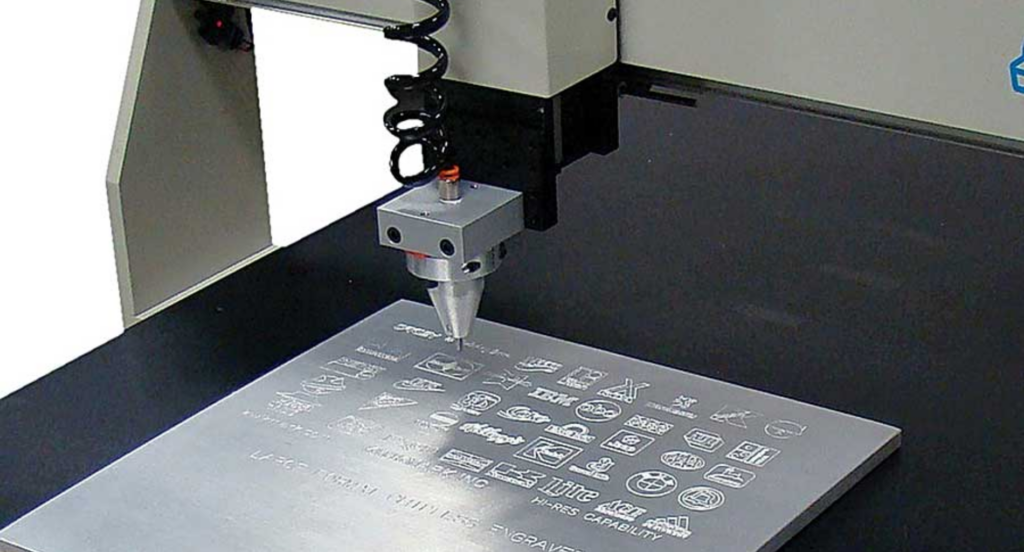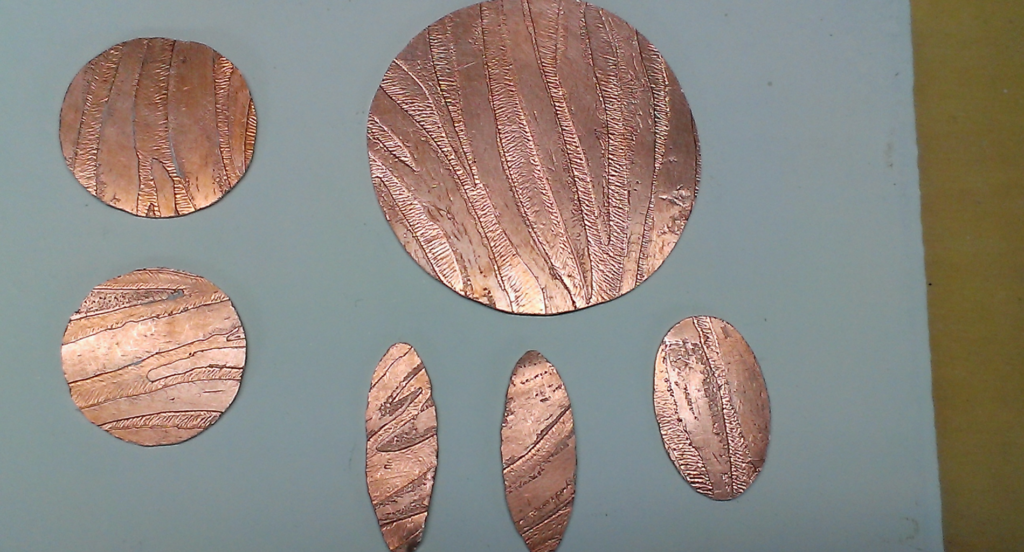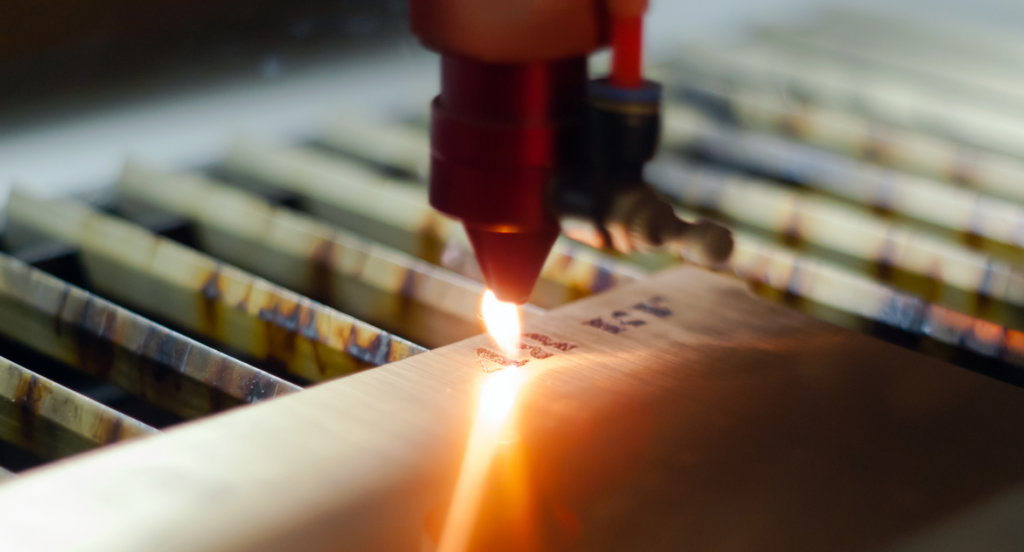What sets laser engraving apart from etching in the realm of metal fabrication? This common query highlights crucial differences in these popular techniques, impacting their use in various industries.
With years of expertise in metal fabrication, our insights will empower you to make informed decisions for your business needs.
Understanding the differences between laser engraving vs etching is essential; while engraving offers depth and durability, etching provides precision and permanence. Both of them have their place in the art of metal fabrication.
In this guide, we’ll explore each method’s strengths and limitations, providing you with the knowledge to select the most suitable option for your fabrication processes.
Read on to uncover the key differences.
1. The Importance of Metal Marking
Metal marking, encompassing both laser engraving and etching, plays a vital role in the fabrication industry. It is not just about aesthetics; it ensures traceability, compliance with regulations, and reinforces brand identity. A good mark can mean the difference between a product that stands the test of time and one that fades into obscurity.
Precision in marking is essential for safety in sectors like aerospace and automotive, where even a small error can have significant consequences. Moreover, the versatility of metal marking methods allows for customization, catering to a wide range of industrial needs. This adaptability makes metal marking an invaluable process in the realm of metal fabrication.

2. Laser Engraving: An Overview
Laser engraving, a key player in the metal fabrication industry, is celebrated for its precision and adaptability.This method, which employs a high-powered laser to vaporize material for deep, enduring markings, is proving to be an increasingly sought-after technology. As globenewswire reported, the laser engraving market was valued at USD 3.5 billion in 2021, and it is expected to generate revenue of USD 6.19 billion by 2028.
Applications:
- Aerospace and Automotive: In sectors where precision is critical, laser engraving is indispensable for creating detailed part identifiers and traceability codes. It ensures every component meets the rigorous safety standards required in aerospace and automotive industries.
- Medical Equipment: Laser engraving is used to mark surgical tools and medical devices with crucial information and tracking details. This level of detail and accuracy is not just about compliance; it’s about ensuring patient safety and care.
- Consumer Electronics: For items that demand both aesthetics and function, laser engraving provides durable and precise branding on a variety of materials. This method is ideal for serial numbers, logos, and detailed designs on everything from smartphones to kitchen appliances.
Advantages:
- No Contact Process: Being a non-contact method means there’s minimal wear and tear on the engraving tools, leading to lower maintenance costs and longer service life. This aspect is particularly beneficial for businesses looking to minimize operational costs.
- Environmentally Friendly: Laser engraving is a cleaner process compared to traditional methods, generating less waste and requiring no chemicals. This makes it an attractive option for companies aiming to reduce their environmental footprint and adhere to green practices.
- Speed and Efficiency: Laser engraving is a fast process, capable of handling high volumes without sacrificing quality. It’s an efficient choice for businesses looking to streamline production and reduce turnaround times.
Disadvantages:
- Energy Consumption: Laser engraving machines typically consume a considerable amount of energy during operation. This can lead to higher utility costs and may not be the most sustainable option for businesses focused on energy efficiency.
- Technical Complexity: Operating laser engraving machinery requires technical knowledge and training. This complexity can lead to a steeper learning curve and the need for skilled operators, potentially increasing labor costs.
- Limited Depth Control: While laser engraving provides precision on the surface, controlling the depth of the engraving can be challenging. This limitation can affect the feasibility of certain designs and applications where depth consistency is crucial.
3. Etching: An Indepth Look
Etching is a traditional yet dynamic technique in metal fabrication, offering a different approach to metal marking compared to laser engraving. This method involves applying a chemical solution to etch designs onto metal surfaces, creating a shallow cut that can be felt with the touch. Etching excels in producing high-contrast markings, making it suitable for applications where visibility is key.
Applications:
- Jewelry and Artisan Crafts: Etching is widely used in the jewelry industry and by artisan crafters for its ability to create delicate designs. It allows for a high level of detail and customization, making each piece unique and valuable.

- Architectural and Decorative Metalwork: Architects and designers often choose etching for creating detailed patterns and imagery on metal surfaces in buildings and decorative pieces. It provides a unique aesthetic that enhances the visual appeal and value of the structure or item.
- Custom Promotional Products: Etching is popular in the promotional products industry for personalizing items like awards, plaques, and business gifts. Its ability to produce fine, detailed work makes it ideal for creating unique, branded items that leave a lasting impression.
Advantages:
- Subtle Detailing: Etching excels in producing fine and subtle details, perfect for detailed designs and delicate patterns. This makes it a preferred choice for applications where precision and finesse are key, such as jewelry and decorative metalwork.
- Low Impact on Material: The etching process applies minimal stress to the material, preserving its integrity and strength. This is especially beneficial for thin or delicate materials that might be damaged by more invasive marking methods.
- Versatility in Application: Etching can be used on a variety of materials, including metals, glass, and ceramics, offering a broad range of applications. Its adaptability makes it suitable for industries ranging from electronics to fine arts.
Disadvantages:
- Chemical Usage: Etching often involves the use of chemicals, which can pose safety and environmental concerns. Proper handling, disposal, and safety measures are required to mitigate these risks.
- Maintenance and Cleanup: The chemical nature of etching requires stringent cleanup and maintenance protocols to ensure safety and equipment longevity. Failure to adhere to these can lead to increased downtime and operational hazards.
- Process Speed: Compared to laser engraving, the etching process can be slower, particularly for complex or large designs. This might lead to longer production times and potentially higher costs for high-volume projects.
4. Key Differences Between Laser Engraving and Etching
After discussing etching in depth, it’s now vital to contrast it with laser engraving, highlighting the distinct advantages and applications of each. Let’s delve into the specific differences that define these two methods in the metal fabrication industry:
Process and Technique
- Laser Engraving: Utilizes a high-powered laser to vaporize material, creating deep, permanent marks. It’s particularly effective for items requiring longevity, like industrial machinery.

- Etching: Involves applying a chemical solution to etch designs, leading to shallower cuts. This method is often preferred for decorative purposes, such as on metal jewelry or commemorative plaques.

Precision and Application
- Laser Engraving: Offers exceptional precision, suitable for detailed designs and small, detailed text. Zemetal harnesses this capability for applications such as barcodes and detailed logos on various metal surfaces, ensuring both quality and precision in every project.
- Etching: Provides a more traditional approach, ideal for larger, simpler designs. It’s frequently used for labeling components in electronics and creating readable, high-contrast serial numbers.
Material Compatibility
- Laser Engraving: Highly adaptable to various metals, including harder alloys, without compromising the integrity of the material. The adaptability of this method across different materials is a testament to its effectiveness in the metal fabrication industry.
- Etching: Better suited for thinner, more delicate metals, as the etching process is less invasive, minimizing the risk of material damage.
Durability and Longevity
- Laser Engraving: Produces deeper engravings that withstand harsh conditions and wear, ensuring long-term visibility and durability. This level of resilience is integral to Zemetal, ensuring their clients’ projects maintain quality over time.
- Etching: Produces surface-level markings more prone to fading under harsh conditions, yet adequate for applications where deep engraving is not essential. For example, this is suitable for indoor signage or decorative items that aren’t exposed to severe weather or heavy wear.
5. 3 Factors To Consider When Deciding Between Laser Engraving and Etching
Understanding the key differences between laser engraving and etching leads to the next crucial step: deciding which method is most suitable for your specific needs. Let’s examine the factors that should guide this decision, ensuring the best fit for your project’s requirements:
#1 Cost-Effectiveness and Budget Constraints
The cost factor is crucial when choosing between laser engraving and etching. Laser engraving involves higher initial costs for equipment and maintenance but excels in efficiency and speed, ideal for large-scale production. On the other hand, etching is more budget-friendly for smaller or artisanal projects, such as boutique jewelry or custom plaques, where the lower volume doesn’t demand high-speed production.
#2 Aftercare and Maintenance Requirements
Consider the aftercare and maintenance requirements of the engraved or etched product. Laser-engraved items often require minimal maintenance due to the durability of the marking, for example, outdoor signage or heavy-duty machinery. Conversely, etching, creating surface-level marks, often requires maintenance or coatings, particularly for outdoor or decorative items like etched panels or metal furnishings.
#3 Flexibility and Customization Options
The flexibility and customization options are critical factors. Laser engraving provides a high degree of customization, allowing for varied designs. This makes it ideal for personalized items like custom-engraved trophies or machinery parts. Etching, while somewhat less flexible in terms of designing, offers a unique aesthetic that can be desirable for certain artistic, such as creating distinctive patterns on metal homeware.
This table outlines the flexibility and customization options available with laser engraving and etching, highlighting their applications in creating personalized and artistically unique items.
| Technique | Customization Capability | Ideal Use Cases |
| Laser Engraving | High degree of design versatility | Custom-engraved trophies, machinery parts |
| Etching | Specific for creating unique aesthetic finishes | Artistic patterns on metal homeware |
| Texturing | Allows for varied tactile surfaces | Decorative and functional items |
| Precision Cutting | Enables intricate designs and shapes | Detailed decorative elements |
| Surface Treatment | Altering surface properties for aesthetic variation | Specialized artistic projects |
Conclusion
This exploration of laser engraving versus etching provides valuable insights for making informed decisions in metal fabrication. With this knowledge, choosing the appropriate method for your specific needs becomes a more straightforward process in every business projects.
For expert advice and top-notch solutions to laser engraving and etching, turn to Zemetal. To explore our services and how we can assist you, contact us today.
Dive Deeper Into Our Resources
Looking for more diverse service options? Browse through our handpicked selections:
Still haven’t found what you’re looking for? Don’t hesitate to contact us. We’re available around the clock to assist you.








